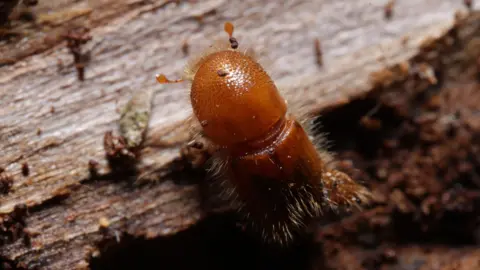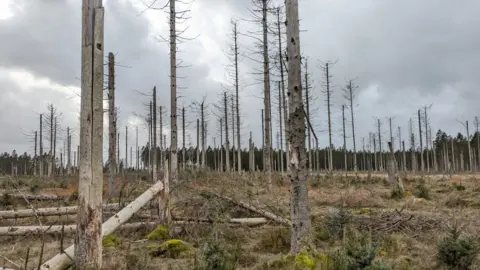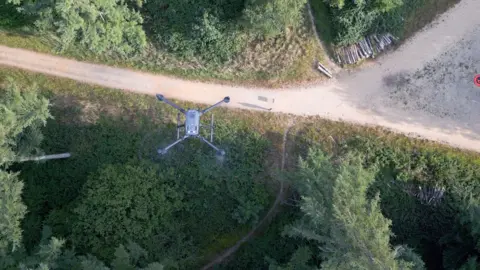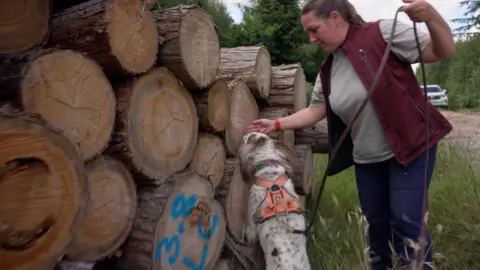AI Research
The A.I.-Profits Drought and the Lessons of History

In a 1987 article in the Times Book Review, Robert Solow, a Nobel-winning economist at M.I.T., commented, “You can see the computer age everywhere but in the productivity statistics.” Despite massive increases in computing power and the rising popularity of personal computers, government figures showed that over-all output per worker, a key determinant of wages and living standards, had stagnated for more than a decade. The “productivity paradox,” as it came to be known, persisted into the nineteen-nineties and beyond, generating a huge and inconclusive body of literature. Some economists blamed mismanagement of the new technology; others argued that computers paled in economic importance compared to older inventions such as the steam engine and electricity; still others blamed measurement errors in the data and argued that once these were corrected the paradox disappeared.
Nearly forty years after Solow’s article, and almost three years since OpenAI released its ChatGPT chatbot, we may be facing a new economic paradox, this one involving generative artificial intelligence. According to a recent survey carried out by economists at Stanford, Clemson, and the World Bank, in June and July of this year, almost half of all workers—45.6 per cent, to be precise—were using A.I. tools. And yet, a new study, from a team of researchers associated with M.I.T.’s Media Lab, reports, “Despite $30 – $40 billion in enterprise investment into GenAI, this report uncovers a surprising result in that 95% of organizations are getting zero return.”
The study’s authors examined more than three hundred public A.I. initiatives and announcements, and interviewed more than fifty company executives. They defined a successful A.I. investment as one that had been deployed beyond the pilot phase and had generated some measurable financial return or marked gain in productivity after six months. “Just 5% integrated AI pilots are extracting millions in value, while the vast majority remain stuck with no measurable P&L”—profit-and-loss—“impact,” they wrote.
The survey interviews elicited a range of responses, some of which were highly skeptical. “The hype on LinkedIn says everything has changed, but in our operations, nothing fundamental has shifted,” the chief operating officer at a midsize manufacturing firm told researchers. “We’re processing some contracts faster, but that’s all that has changed.” Another respondent commented, “We’ve seen dozens of demos this year. Maybe one or two are genuinely useful. The rest are wrappers or science projects.”
To be sure, the report points out that some firms have made successful A.I. investments. For example, it highlights efficiencies created by customized tools aimed at back-office operations, noting, “These early results suggest that learning-capable systems, when targeted at specific processes, can deliver real value, even without major organizational restructure.” The survey also cites some firms reporting “improved customer retention and sales conversion through automated outreach and intelligent follow-up systems,” which suggests that A.I. systems could be useful for marketing.
But the idea that many companies are struggling to achieve substantial returns jibed with another recent survey, by Akkodis, a multinational consulting firm. After contacting more than two thousand business executives, the firm found that the percentage of C.E.O.s who are “very confident” in their firm’s A.I.-implementation strategies has fallen from eighty-two per cent in 2024 to forty-nine per cent this year. Confidence had also fallen among corporate chief technology officers, although not by as much. These developments “may reflect disappointing outcomes from previous attempts at digital or AI initiatives, delays or failures in implementation as well as concerns around scalability,” the Akkodis survey said.
Last week, media accounts of the M.I.T. Media Lab study coincided with a fall in highly valued stocks associated with A.I., including Nvidia, Meta, and Palantir. Correlation isn’t causation, of course, and recent comments by Sam Altman, the chief executive of OpenAI, may have played a bigger role in the sell-off, which was surely inevitable at some point, given recent price increases. At a dinner with reporters, Altman said valuations were “insane” and used the term “bubble” three times in fifteen seconds, CNBC reported.
Still, the M.I.T. study garnered a lot of attention, and after the initial raft of news stories about the research, a report emerged that the Media Lab, which has ties to many technology companies, was quietly restricting access to it. Messages that I left with the organization’s communications office and two of the report’s authors went unreturned.
Although the report is more nuanced than some news coverage made out, it certainly raises questions about the grand economic narrative that has underpinned the tech boom since November, 2022, when OpenAI released ChatGPT. The short version of this narrative is that the economy-wide diffusion of generative A.I. would be bad for workers, particularly knowledge workers, but great for companies, and their shareholders, because it would generate a big leap in productivity and, by extension, profits.
One possible reason this doesn’t seem to have happened yet recalls the suggestion that management failures were constraining the productivity benefits of computers in the nineteen-eighties and early nineties. The Media Lab study found that some of the most successful A.I. investments were made by startups that use highly customized tools in narrow areas of workflow processes. On the other side of the “GenAI Divide,” the study pointed to less successful startups that were “either building generic tools or trying to develop capabilities internally.” More generally, the report said the divisions between success and failure “does not seem to be driven by model quality or regulation, but seems to be determined by approach.”
Conceivably, the novelty and complexity of generative A.I. may be holding some companies back. A recent study, by the consultancy firm Gartner, found that fewer than half of C.E.O.s are confident that their chief information officers are “AI-savvy.” But there is another possible explanation for the disappointing record highlighted in the Media Lab report: for many established businesses, generative A.I., at least in its current incarnation, simply isn’t all it’s been cracked up to be. “It’s excellent for brainstorming and first drafts, but it doesn’t retain knowledge of client preferences or learn from previous edits,” one respondent to the Media Lab survey said. “It repeats the same mistakes and requires extensive context input for each session. For high-stakes work, I need a system that accumulates knowledge and improves over time.”
Of course, there are plenty of people who find A.I. useful, and there is academic evidence to back this up: in 2023, two economists at M.I.T. found that exposure to ChatGPT enabled participants in a randomized trial to complete “professional writing tasks” more quickly and improved the quality of their writing. The same year, other research teams identified productivity-enhancing outcomes for computer programmers who used Github’s Copilot, and for customer-support agents who were given access to proprietary A.I. tools. The Media Lab researchers found that many workers are using their personal tools, such as GPT or Claude, at their jobs; the report refers to this phenomenon as the “shadow AI economy,” and comments that “it often delivers better ROI” than employer initiatives. But the question remains, and it’s one that senior corporate executives will surely be asking more frequently: Why haven’t more firms seen these types of benefits feeding through to the bottom line?
Part of the problem may be that generative A.I., remarkable as it is, has limited application in many parts of the economy. Taken together, leisure and hospitality, retail, construction, real estate, and the care sector—child-minding and looking after people who are old or infirm—employ about fifty million Americans, but they don’t look like immediate candidates for an A.I. transformation.
Another important thing to note is that adoption of A.I. throughout the economy could well be a lengthy process. In Silicon Valley, people like to move fast and break things. But economic history tells us that even the most transformative technologies, which economists refer to as general-purpose technologies, can’t be exploited to maximum effect until infrastructure, skills, and products that can complement them are developed. And this can be a long process. The Scottish inventor James Watt invented his cylindrical steam engine in 1769. Thirty years later, most cotton factories in Great Britain were still powered by water wheels, partly because it was difficult to transport coal for use in steam engines. That didn’t change until the development of steam-powered railways in the early nineteenth century. Electricity also spread slowly and didn’t immediately lead to an economy-wide spurt in productivity growth. As Solow noted, the development of computers followed the same pattern. (From 1996 to 2003, economy-wide productivity growth finally increased, which many economists attributed to the delayed effect of information technology. Subsequently, however, it fell back.)
AI Research
Lessons from 60 Years in Journalism — A Postscript on Artificial Intelligence – TAPinto
AI Research
Tories pledge to get ‘all our oil and gas out of the North Sea’

Conservative leader Kemi Badenoch has said her party will remove all net zero requirements on oil and gas companies drilling in the North Sea if elected.
Badenoch is to formally announce the plan to focus solely on “maximising extraction” and to get “all our oil and gas out of the North Sea” in a speech in Aberdeen on Tuesday.
Reform UK has said it wants more fossil fuels extracted from the North Sea.
The Labour government has committed to banning new exploration licences. A spokesperson said a “fair and orderly transition” away from oil and gas would “drive growth”.
Exploring new fields would “not take a penny off bills” or improve energy security and would “only accelerate the worsening climate crisis”, the government spokesperson warned.
Badenoch signalled a significant change in Conservative climate policy when she announced earlier this year that reaching net zero would be “impossible” by 2050.
Successive UK governments have pledged to reach the target by 2050 and it was written into law by Theresa May in 2019. It means the UK must cut carbon emissions until it removes as much as it produces, in line with the 2015 Paris Climate Agreement.
Now Badenoch has said that requirements to work towards net zero are a burden on oil and gas producers in the North Sea which are damaging the economy and which she would remove.
The Tory leader said a Conservative government would scrap the need to reduce emissions or to work on technologies such as carbon storage.
Badenoch said it was “absurd” the UK was leaving “vital resources untapped” while “neighbours like Norway extracted them from the same sea bed”.
In 2023, then Prime Minister Rishi Sunak granted 100 new licences to drill in the North Sea which he said at the time was “entirely consistent” with net zero commitments.
Reform UK has said it will abolish the push for net zero if elected.
The current government said it had made the “biggest ever investment in offshore wind and three first of a kind carbon capture and storage clusters”.
Carbon capture and storage facilities aim to prevent carbon dioxide (CO2) produced from industrial processes and power stations from being released into the atmosphere.
Most of the CO2 produced is captured, transported and then stored deep underground.
It is seen by the likes of the International Energy Agency and the Climate Change Committee as a key element in meeting targets to cut the greenhouse gases driving dangerous climate change.
AI Research
Dogs and drones join forest battle against eight-toothed beetle

Esme Stallard and Justin RowlattClimate and science team
 Sean Gallup/Getty Images
Sean Gallup/Getty ImagesIt is smaller than your fingernail, but this hairy beetle is one of the biggest single threats to the UK’s forests.
The bark beetle has been the scourge of Europe, killing millions of spruce trees, yet the government thought it could halt its spread to the UK by checking imported wood products at ports.
But this was not their entry route of choice – they were being carried on winds straight over the English Channel.
Now, UK government scientists have been fighting back, with an unusual arsenal including sniffer dogs, drones and nuclear waste models.
They claim the UK has eradicated the beetle from at risk areas in the east and south east. But climate change could make the job even harder in the future.
The spruce bark beetle, or Ips typographus, has been munching its way through the conifer trees of Europe for decades, leaving behind a trail of destruction.
The beetles rear and feed their young under the bark of spruce trees in complex webs of interweaving tunnels called galleries.
When trees are infested with a few thousand beetles they can cope, using resin to flush the beetles out.
But for a stressed tree its natural defences are reduced and the beetles start to multiply.
“Their populations can build to a point where they can overcome the tree defences – there are millions, billions of beetles,” explained Dr Max Blake, head of tree health at the UK government-funded Forestry Research.
“There are so many the tree cannot deal with them, particularly when it is dry, they don’t have the resin pressure to flush the galleries.”
Since the beetle took hold in Norway over a decade ago it has been able to wipe out 100 million cubic metres of spruce, according to Rothamsted Research.
‘Public enemy number one’
As Sitka spruce is the main tree used for timber in the UK, Dr Blake and his colleagues watched developments on continental Europe with some serious concern.
“We have 725,000 hectares of spruce alone, if this beetle was allowed to get hold of that, the destructive potential means a vast amount of that is at risk,” said Andrea Deol at Forestry Research. “We valued it – and it’s a partial valuation at £2.9bn per year in Great Britain.”
There are more than 1,400 pests and diseases on the government’s plant health risk register, but Ips has been labelled “public enemy number one”.
The number of those diseases has been accelerating, according to Nick Phillips at charity The Woodland Trust.
“Predominantly, the reason for that is global trade, we’re importing wood products, trees for planting, which does sometimes bring ‘hitchhikers’ in terms of pests and disease,” he said.
Forestry Research had been working with border control for years to check such products for Ips, but in 2018 made a shocking discovery in a wood in Kent.
“We found a breeding population that had been there for a few years,” explained Ms Deol.
“Later we started to pick up larger volumes of beetles in [our] traps which seemed to suggest they were arriving by other means. All of the research we have done now has indicated they are being blown over from the continent on the wind,” she added.
 Daegan Inward/Forestry Research
Daegan Inward/Forestry ResearchThe team knew they had to act quickly and has been deploying a mixture of techniques that wouldn’t look out of place in a military operation.
Drones are sent up to survey hundreds of hectares of forest, looking for signs of infestation from the sky – as the beetle takes hold, the upper canopy of the tree cannot be fed nutrients and water, and begins to die off.
But next is the painstaking work of entomologists going on foot to inspect the trees themselves.
“They are looking for a needle in a haystack, sometimes looking for single beetles – to get hold of the pioneer species before they are allowed to establish,” Andrea Deol said.
In a single year her team have inspected 4,500 hectares of spruce on the public estate – just shy of 7,000 football pitches.
Such physically-demanding work is difficult to sustain and the team has been looking for some assistance from the natural and tech world alike.
 Tony Jolliffe/BBC
Tony Jolliffe/BBCWhen the pioneer Spruce bark beetles find a suitable host tree they release pheromones – chemical signals to attract fellow beetles and establish a colony.
But it is this strong smell, as well as the smell associated with their insect poo – frass – that makes them ideal to be found by sniffer dogs.
Early trials so far have been successful. The dogs are particularly useful for inspecting large timber stacks which can be difficult to inspect visually.
The team is also deploying cameras on their bug traps, which are now able to scan daily for the beetles and identify them in real time.
“We have [created] our own algorithm to identify the insects. We have taken about 20,000 images of Ips, other beetles and debris, which have been formally identified by entomologists, and fed it into the model,” said Dr Blake.
Some of the traps can be in difficult to access areas and previously had only been checked every week by entomologists working on the ground.
The result of this work means that the UK has been confirmed as the first country to have eradicated Ips Typographus in its controlled areas, deemed to be at risk from infestation, and which covers the south east and east England.
“What we are doing is having a positive impact and it is vital that we continue to maintain that effort, if we let our guard down we know we have got those incursion risks year on year,” said Ms Deol.
 Tony Jolliffe/BBC
Tony Jolliffe/BBCAnd those risks are rising. Europe has seen populations of Ips increase as they take advantage of trees stressed by the changing climate.
Europe is experiencing more extreme rainfall in winter and milder temperatures meaning there is less freezing, leaving the trees in waterlogged conditions.
This coupled with drier summers leaves them stressed and susceptible to falling in stormy weather, and this is when Ips can take hold.
With larger populations in Europe the risk of Ips colonies being carried to the UK goes up.
The team at Forestry Research has been working hard to accurately predict when these incursions may occur.
“We have been doing modelling with colleagues at the University of Cambridge and the Met Office which have adapted a nuclear atmospheric dispersion model to Ips,” explained Dr Blake. “So, [the model] was originally used to look at nuclear fallout and where the winds take it, instead we are using the model to look at how far Ips goes.”
Nick Phillips at The Woodland Trust is strongly supportive of the government’s work but worries about the loss of ancient woodland – the oldest and most biologically-rich areas of forest.
Commercial spruce have long been planted next to such woods, and every time a tree hosting spruce beetle is found, it and neighbouring, sometimes ancient trees, have to be removed.
“We really want the government to maintain as much of the trees as they can, particularly the ones that aren’t affected, and then also when the trees are removed, supporting landowners to take steps to restore what’s there,” he said. “So that they’re given grants, for example, to be able to recover the woodland sites.”
The government has increased funding for woodlands in recent years but this has been focused on planting new trees.
“If we only have funding and support for the first few years of a tree’s life, but not for those woodlands that are 100 or century years old, then we’re not going to be able to deliver nature recovery and capture carbon,” he said.
Additional reporting Miho Tanaka

-
Tools & Platforms3 weeks ago
Building Trust in Military AI Starts with Opening the Black Box – War on the Rocks
-

 Ethics & Policy1 month ago
Ethics & Policy1 month agoSDAIA Supports Saudi Arabia’s Leadership in Shaping Global AI Ethics, Policy, and Research – وكالة الأنباء السعودية
-

 Events & Conferences3 months ago
Events & Conferences3 months agoJourney to 1000 models: Scaling Instagram’s recommendation system
-

 Business2 days ago
Business2 days agoThe Guardian view on Trump and the Fed: independence is no substitute for accountability | Editorial
-

 Jobs & Careers2 months ago
Jobs & Careers2 months agoMumbai-based Perplexity Alternative Has 60k+ Users Without Funding
-

 Funding & Business2 months ago
Funding & Business2 months agoKayak and Expedia race to build AI travel agents that turn social posts into itineraries
-

 Education2 months ago
Education2 months agoVEX Robotics launches AI-powered classroom robotics system
-

 Podcasts & Talks2 months ago
Podcasts & Talks2 months agoHappy 4th of July! 🎆 Made with Veo 3 in Gemini
-

 Podcasts & Talks2 months ago
Podcasts & Talks2 months agoOpenAI 🤝 @teamganassi
-

 Jobs & Careers2 months ago
Jobs & Careers2 months agoAstrophel Aerospace Raises ₹6.84 Crore to Build Reusable Launch Vehicle























